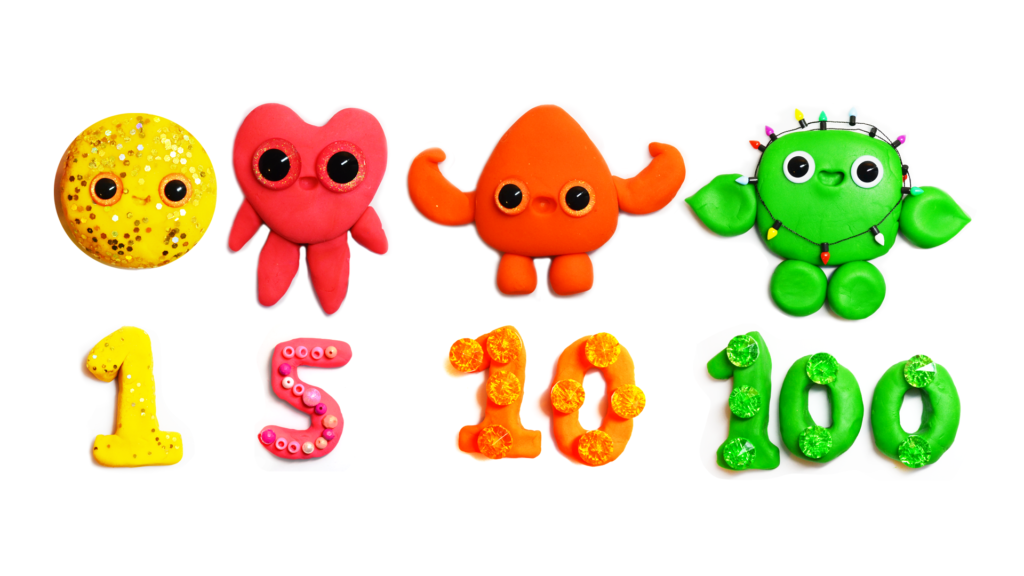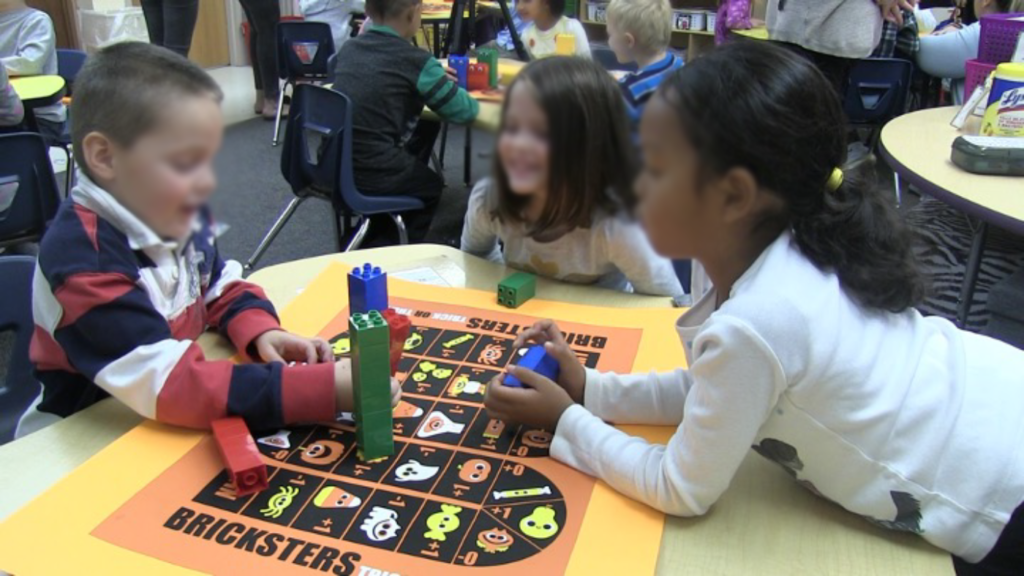November 24, 2022 by Sonia Tiwari |
Several educational products and services use unique character designs to distinguish their brands. While talking Geckos in insurance commercials can be entertaining and interactive user-guide characters like Clippy in the good old days of Microsoft Word are dated, characters have a lot more to offer! Learning experience designers can leverage characters not only to create visually appealing designs but to facilitate learning through engaging experiences.
Coming from a Game Design background in the industry and having designed several characters, I was always curious about the WHY behind design choices and how they may affect user experiences. I pivoted to a PhD program in Education to explore the relationship between design and education in creating unique learning experiences. With the dual lived experiences of being a designer and a researcher, I began to see relevant academic research threads with practical applications for LXDs.
Academic research suggests that animated characters can be used in multiple ways to support learning, such as:
- Characters enhance visual representation of emotions, choices, and ideas (Bailey et al., 2006).
Takeaway: LXDs can use character expressions, gestures, body language, clothing and accessories, backstories, voice and speech etc. as representations of the target learners. LXDs can also offer characters choices within the learning experience that can represent decision-making criteria of learners in the real world. - Characters as pedagogical agents in course content (Hong et al., 2014)
Takeaway: LXDs can use characters to guide learners through a challenging process, such as the Mouse character on the children’s educational website abcmouse.com - Characters as conversational agents in media programming (Xu & Warschauer, 2020)
Takeaway: LXDs can have characters talk directly to the learners to start a thoughtful conversation, such as prompting them to think about certain aspects of the learning experience, or directing their focus to a key idea - Characters as embodiment and representation in virtual worlds (Economou et al., 2017).
Takeaway: LXDs can use characters as realistic or fictional avatars in virtual worlds, either building off of the likeness of learners in physical appearance, or representing their personality with imaginary designs. Animated characters also offer the freedom to represent learners virtually in experience-specific costume, or as experience-specific object. LXDs can also use characters to help learners get a fully embodied experience, such as being able to look around, navigate, take action, or feel responses to actions in the virtual world. - Characters as parasocial friends for children, using repeated media exposure, parental encouragement, and engagement with character-based toys (Bond and Calvert, 2014).
Takeaway: LXDs can design characters based on ideal qualities learners look for in a friend or social other. Designing characters this way could help learners feel more at ease and therefore more primed for learning from the character. - Characters as facilitators of observational learning and social interaction which is similar to real-life interactions (Richert, Robb, & Smith, 2011).
Takeaway: LXDs can have characters perform a goal or model behavior for the learners, which could help them take action in real-life.
While popular children’s media characters such as Curious George (PBS Kids), My Little Pony (Hasbro) or Angry Birds (Rovio) may have a strong influence because of their popularity through mainstream media such as film, television and mass-manufactured toys, some researchers found that new and unfamiliar characters can also have a positive influence on children’s learning experiences (Lauricella et al., 2011). This gives LXDs the opportunity to design new characters and narratives without having to rely on existing popular characters.
Keeping these academic studies in my mind, I became more aware of the role character designs play in the overall learning experience. Following are four examples of how I utilized character designs to support learning experiences.
Microbe
The Microbe character (Figure 1) was designed as part of the Microbe’s Journey Game, which was designed for an undergraduate microbiology foundation course at Penn State. The goal of the game is to explore the Microbe’s journey through 5 billion years of the earth’s microbial history. Students could map key microbial events across a timeline. The Microbe character gave students clues on whether their currently mapped events were in the right spot.

Figure 1. Microbe from the game Microbe’s Journey
Claytons
Claytons is a card game to help children (second grade) practice addition by grouping numbers. Claytons are cute characters made of clay. Each clayton (Figure 2) represents a number – 1, 5, 10 or 100. Through a combination of Claytons, children practice adding larger numbers (such as two 5 claytons can be exchanged for one 10 clayton). I photographed hand-sculpted clay characters to capture the playful and raw nature of young children’s play (Tiwari, 2020).

Figure 2. Claytons characters and their corresponding number values
Q-Bot
Q-Bot or the Quarantine Robot (Figure 4) was a character I designed as part of a free children’s book by the same name, aimed at children ages 4-8 and their families (Tiwari, 2019). The goal of the book was helping children learn the best health and hygiene practices during the Covid-19 Pandemic.

Figure 3. Q-Bot from the children’s book QBot: The Quarantine Robot
Bricksters
Bricksters are characters made from actual toy bricks with googly eyes and yarn hair (Figure 5) . Bricksters are part of a board game by the same name that I designed for Pre-K aged children at our local school district. The game was designed around an existing math module on adding and subtracting by 0, 1, and 2. The module was typically taught around October during Halloween dress-up week, and so I designed the board game on a Halloween theme. Children took turns to move their 4-bricks tall Bricksters around the illustrated board. Depending on where they landed on the board (Figure 6), a halloween-themed character would ask them to add more bricks or knock off some bricks from their Brickster. The player with the longest stack of bricks (tallest Brickster) wins! The goal was to help children visualise each number as a brick and observe addition or subtraction more visually.

Figure 4. Children playing Bricksters board game

Figure 5 . Bricksters board
I will continue to explore more ways of utilizing my background as a visual designer in the world of learning. I hope more LXDs will cross over to the world of education research (and vice versa) to study both why and how characters can support learning experiences!
References
Bailey, Brian P., Sharon Y. Tettegah, and Terry J. Bradley. “Clover: Connecting technology and character education using personally-constructed animated vignettes.” Interacting with computers 18.4 (2006): 793-819.
Economou, D., Doumanis, I., Argyriou, L., & Georgalas, N. (2017). User experience evaluation of human representation in collaborative virtual environments. Personal and Ubiquitous Computing, 21(6), 989-1001.
Hong, Z. W., Chen, Y. L., & Lan, C. H. (2014). A courseware to script animated pedagogical agents in instructional material for elementary students in English education. Computer Assisted Language Learning, 27(5), 379-394.
Richards, M. N., & Calvert, S. L. (2017). Media characters, parasocial relationships, and the social aspects of children’s learning across media platforms. In Media exposure during infancy and early childhood (pp. 141-163). Springer, Cham.
Simensky, L. (2017). Character development in practice: How producers craft engaging characters to drive content delivery: Commentary on chapter 9. In Media Exposure During Infancy and Early Childhood(pp. 165-171). Springer, Cham.
Tiwari, Sonia. “Microbe’s Journey”, Penn State Creative Services, 2020, https://creativeservices.psu.edu/microbe-game/
Tiwari, Sonia. “Pie Spy Quiz” SoniaTiwari.com, 2020, www.soniatiwari.com/2021/04/pie-spy.html
Tiwari, Sonia. “Claytons Game” SoniaTiwari.com, 2020, www.soniatiwari.com/2021/04/claytons.html
Tiwari, Sonia. “Bricksters Board Game.” SoniaTiwari.com, 2019, www.soniatiwari.com/2019/03/msep.html
Tiwari, S. (2020). Q-Bot, the Quarantine Robot: Joint-media engagement between children and adults about quarantine living experiences. Information and Learning Sciences.
Xu, Y., & Warschauer, M. (2020, April). ” Elinor Is Talking to Me on the Screen!” Integrating Conversational Agents into Children’s Television Programming. In Extended Abstracts of the 2020 CHI Conference on Human Factors in Computing Systems (pp. 1-8).
About Dr. Sonia Tiwari
Learning Experience Designer interested in creating children’s educational products based on qualitative research. PhD in Learning, Design, and Technology from Penn State University currently working in San Francisco as an Adjunct Professor at California College of the Arts teaching UX Research. Consultant for education companies guiding research-informed product design for children including toys, games, DIY kits, AR/VR experiences, and other emerging formats. My current research explores the future of virtual influencers in children’s educational media.

